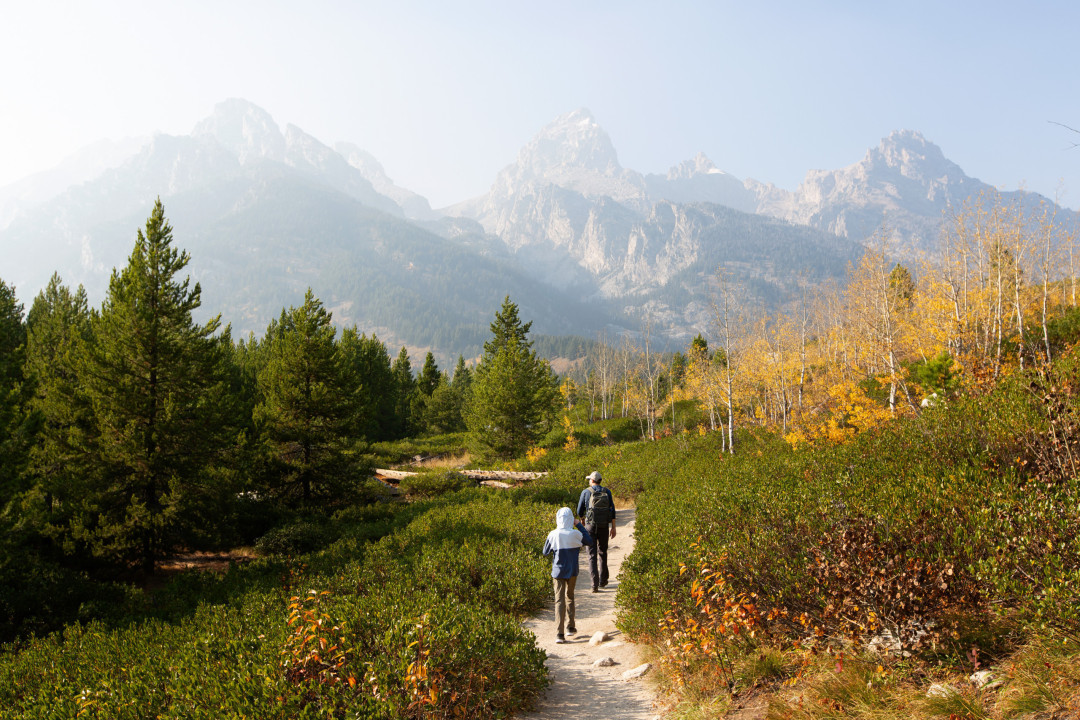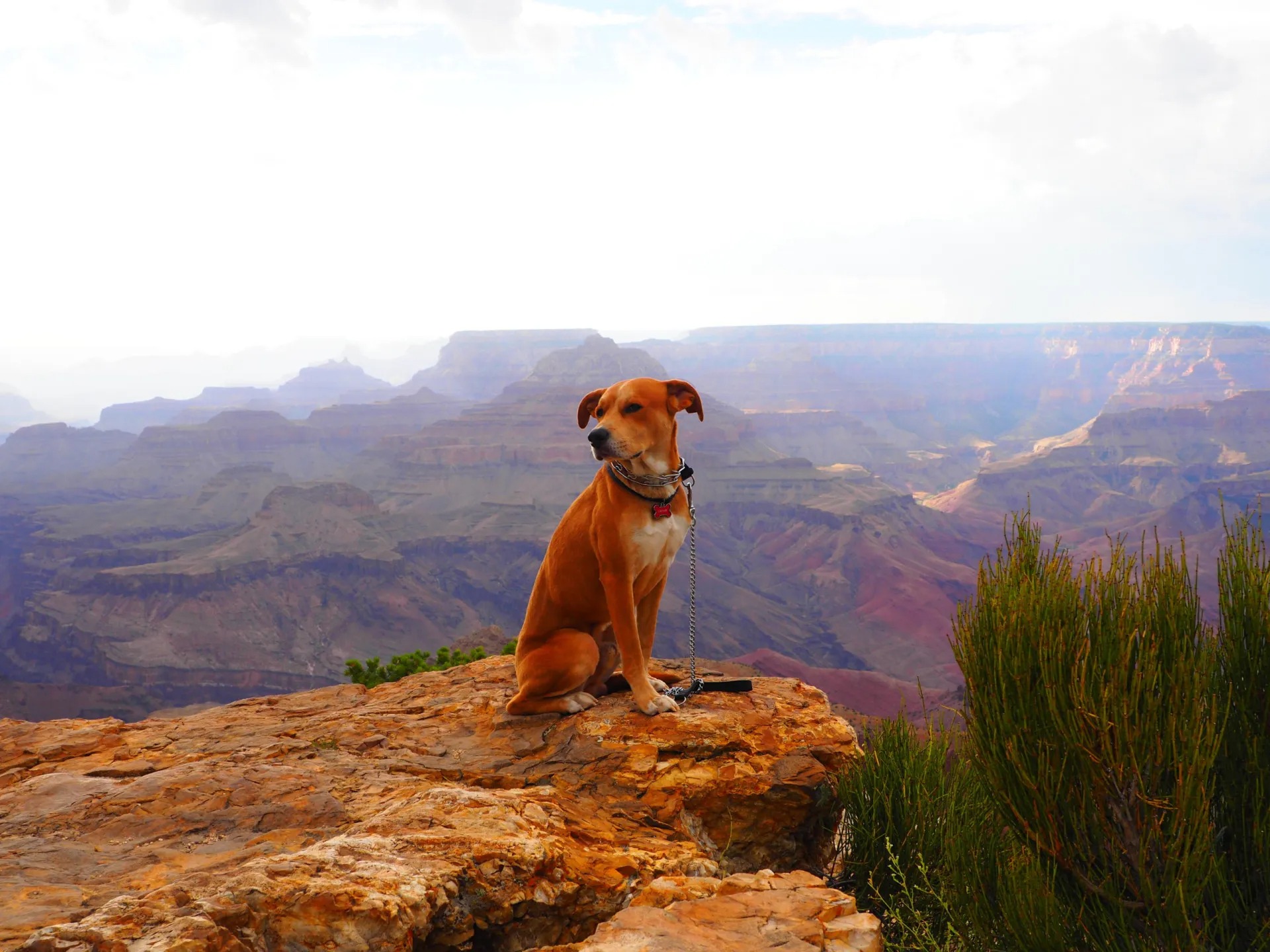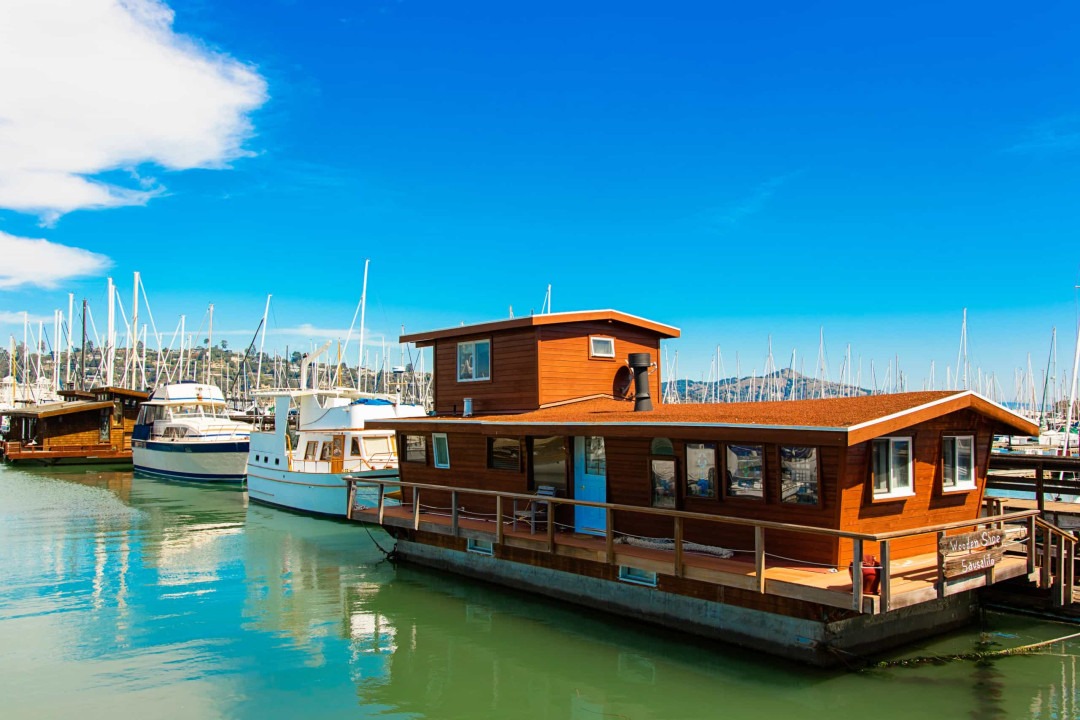Travel
The Biggest Mistakes Tourists Make at National Parks (And How to Avoid Them)

In the heart of the world’s untouched wilderness, national parks beckon adventurers with breathtaking landscapes, rare wildlife, and unforgettable experiences. But beneath the beauty lies a trail of common—and sometimes dangerous—mistakes that many visitors make.
From underestimating the sheer size of these parks to ignoring safety guidelines, even seasoned travelers can fall into these pitfalls. Whether you’re planning your first visit or your tenth, avoiding these mistakes can mean the difference between an amazing adventure and a disastrous trip.
Let’s explore the biggest blunders tourists make in national parks—and how you can stay safe, respectful, and prepared.
1. Underestimating the Scale
National parks are massive. Yellowstone alone spans over 2.2 million acres, and some parks are even larger. Many visitors try to cram too much into a short visit, leading to exhaustion and missed experiences.
How to avoid it:
- Research the park’s size and prioritize key attractions.
- Focus on quality over quantity—pick a few areas to explore deeply.
- Consider multi-day trips if possible.
2. Ignoring Safety Guidelines
Staying on marked trails and following park rules isn’t just about compliance—it’s about survival. Every year, tourists get lost, injured, or worse by venturing off-trail or ignoring warnings.
How to stay safe:
- Always follow posted signs and ranger advice.
- Avoid solo hikes in remote areas.
- Carry a whistle, map, and emergency contact info.
3. Ignoring Fire Regulations
Wildfires devastate ecosystems, and many are accidentally started by careless visitors. A single unattended campfire or discarded cigarette can spark a disaster.
What to do instead:
- Check fire restrictions before visiting.
- Use designated fire rings if campfires are allowed.
- Never leave flames unattended.
4. Disregarding Weather Forecasts
Weather in national parks can shift rapidly—sunny skies can turn into thunderstorms or blizzards within hours.
Stay prepared by:
- Checking forecasts before and during your trip.
- Packing layers and rain gear.
- Knowing signs of hypothermia or heatstroke.
5. Not Packing Essentials
Running out of water, forgetting sunscreen, or wearing improper footwear can ruin a trip—or worse, put you in danger.
Must-pack items:
- Plenty of water (more than you think you’ll need).
- Sun protection (hat, sunscreen, sunglasses).
- Sturdy footwear and weather-appropriate clothing.
6. Overcrowding Popular Attractions
Iconic spots like Yellowstone’s Old Faithful or Zion’s Angels Landing get swarmed, leading to long waits and a diminished experience.
Try this instead:
- Visit early in the morning or late in the afternoon.
- Explore lesser-known trails and viewpoints.
- Use park shuttle systems to avoid traffic.
7. Disrupting Wildlife
Feeding, approaching, or disturbing animals stresses them and can be dangerous. Bison, bears, and even deer can turn aggressive if provoked.
Wildlife etiquette:
- Keep at least 100 yards from bears and wolves, 25 yards from other animals.
- Never feed wildlife (even squirrels!).
- Use binoculars or zoom lenses for photos.
8. Harassing Wildlife for Photos
Selfies with bison or chasing elk for the perfect shot can harm animals—and you. Every year, tourists are gored, trampled, or mauled.
Safe photography tips:
- Stay on trails and use zoom lenses.
- Never corner or surround an animal.
- If an animal reacts to you, you’re too close.
9. Engaging in Risky Behavior for Photos
Climbing on unstable rocks, dangling off cliffs, or wading into dangerous waters for Instagram has led to fatal accidents.
Stay smart:
- No photo is worth your life.
- Stick to safe viewpoints.
- Follow park warnings about hazardous areas.
10. Leaving Trash Behind
Litter harms wildlife, pollutes water sources, and ruins the park for others.
Follow “Leave No Trace” principles:
- Pack out all trash (including biodegradable waste).
- Use reusable containers.
- Pick up any litter you see (even if it’s not yours).
11. Not Practicing “Leave No Trace”
Beyond trash, this means minimizing campfire impact, respecting wildlife, and leaving natural objects (like rocks and plants) undisturbed.
Key principles:
- Camp only in designated areas.
- Bury human waste properly (where allowed).
- Leave everything as you found it.
12. Being Unprepared for Emergencies
Injuries, getting lost, or sudden weather changes can turn dangerous without proper preparation.
Emergency essentials:
- First aid kit.
- Emergency blanket and whistle.
- Portable charger or satellite communicator.
13. Underestimating Physical Challenges
Even “easy” trails can be strenuous at high altitudes or in extreme heat.
Avoid exhaustion by:
- Researching trail difficulty.
- Training beforehand if attempting long hikes.
- Knowing your limits and turning back if needed.
14. Neglecting Hydration and Nutrition
Dehydration and altitude sickness are common—and preventable.
Stay fueled:
- Drink water before you feel thirsty.
- Pack high-energy snacks (nuts, jerky, dried fruit).
- Avoid excessive caffeine/alcohol.
15. Disregarding Trail Difficulty Ratings
Trails are rated for a reason—ignoring them can lead to dangerous situations.
Check before you hike:
- Distance, elevation gain, and terrain.
- Recent trail conditions (muddy, icy, etc.).
- Your own fitness level.
16. Overreliance on Technology
Cell service is spotty in remote parks, and batteries die.
Backup navigation:
- Physical map and compass.
- Download offline maps.
- Tell someone your route.
17. Disturbing Sensitive Ecosystems
Stepping off-trail can damage fragile plants and disrupt animal habitats.
Protect the park by:
- Staying on marked paths.
- Avoiding shortcuts that cause erosion.
- Not picking flowers or moving rocks.
18. Not Respecting Quiet Zones
Noise pollution stresses wildlife and ruins the experience for others.
Keep it peaceful:
- Avoid loud music or yelling.
- Respect designated quiet areas.
- Listen to nature instead!
19. Disregarding Trail Closures
Closed trails mean danger—whether from wildlife, erosion, or maintenance.
Always obey closures:
- Check the park’s website for updates.
- Have backup hike options.
- Never go around barriers.
20. Disregarding Trail Etiquette
Basic courtesy keeps trails enjoyable for everyone.
Follow these rules:
- Uphill hikers have right of way.
- Step aside for faster hikers.
- Keep groups small and controlled.
21. Lack of Cultural Sensitivity
Many parks are sacred to Indigenous communities.
Be respectful by:
- Learning about the land’s history.
- Not touching petroglyphs or artifacts.
- Supporting local Indigenous guides.
22. Skipping Educational Opportunities
Visitor centers and ranger talks offer invaluable insights.
Enhance your trip by:
- Joining guided hikes or programs.
- Asking rangers for tips.
- Reading park exhibits.
23. Not Accounting for Wildlife Encounters
Bears, moose, and snakes are wild—not photo props.
Prepare by:
- Carrying bear spray in bear country.
- Making noise on trails to avoid surprises.
- Knowing what to do if you encounter predators.
24. Not Informing Others of Plans
If you get lost, rescuers need to know where to look.
Always:
- Share your itinerary with someone.
- Note your expected return time.
- Check in when you’re back.
25. Overlooking Seasonal Considerations
Winter brings avalanches; summer brings flash floods.
Plan accordingly:
- Research seasonal risks.
- Check road/trail conditions.
- Pack for extreme weather.
26. Disregarding Local Regulations
Fishing without a permit or camping illegally harms conservation efforts.
Follow the rules:
- Check permit requirements.
- Respect fire bans.
- Camp only in designated spots.
27. Being Unprepared for Remote Areas
Some parks have no cell service, gas stations, or hospitals for miles.
Stay self-sufficient:
- Carry extra food, water, and fuel.
- Know emergency exit routes.
- Have a backup communication plan.
28. Failing to Appreciate Conservation
These parks exist to protect nature—not just for our enjoyment.
How to help:
- Donate to park foundations.
- Volunteer for cleanups.
- Advocate for conservation efforts.
Final Thoughts
National parks are treasures that deserve our respect and care. By avoiding these common mistakes, you’ll not only have a safer, more enjoyable trip—you’ll also help preserve these wild spaces for future generations.
Have you made any of these mistakes? Share your stories and tips in the comments!
Sources: National Park Service, Business Insider, Travel + Leisure, Leave No Trace Center

Travel
24 Most Dog-Friendly National Parks in the U.S.

If you’ve ever wondered where to take your four-legged best friend on an epic adventure, you’re in luck. Across the United States, many national parks welcome leashed dogs on trails, roads, and in campgrounds—though each park has its own rules and best spots for pups. Below is an overview of 24 standout dog-friendly national parks, organized by state, so you can start planning that next tail‑wagging trip.
Acadia National Park (Maine)
Nestled on Maine’s rugged coast, Acadia is frequently named the most dog‑friendly national park in the country. With over 100 miles of hiking trails and 45 miles of historic carriage roads open to leashed pups, you’ll find plenty of options for seaside strolls and forested paths. Just remember:
-
Where dogs can go: Almost every trail and campground (except Duck Harbor) allows dogs on a leash.
-
Key highlights: Jordan Pond Path, Ocean Path overlooking rocky shores, and Cadillac Mountain’s sunrise (with a sturdy leash and patient pup).
-
Tip: Bar Harbor, the gateway town, is full of dog‑friendly cafés and shops where you can grab a pup‑friendly treat after a long day on the trails.
Cuyahoga Valley National Park (Ohio)
A hidden gem between Cleveland and Akron, Cuyahoga Valley blends Ohio’s industrial history with lush woodlands. Around 110 miles of trails welcome leashed dogs, including 20 miles along the scenic Towpath Trail (part of the Ohio & Erie Canal Towpath). Note that:
-
Restrictions: The East Rim mountain‑bike area and all visitor facilities are off‑limits to dogs.
-
Highlights: Brandywine Falls (view from the boardwalk), the Canal Exploration Center, and frequent wildlife sightings—expect deer, foxes, and plenty of squirrels to chase on scent only.
-
Tip: Look for pet‑friendly rental cabins and B&Bs in nearby Peninsula or Kent to extend your stay.
Shenandoah National Park (Virginia)
Shenandoah is a hiker’s paradise, stretching along 105 winding miles of the Blue Ridge Mountains. Nearly all of Shenandoah’s 500+ miles of footpaths are open to leashed dogs—only about 20 miles are off‑limits (some backcountry trails and a handful of overlooks). You’ll love:
-
Top trails: Stony Man Trail for sweeping valley views, Dark Hollow Falls for a relatively short (but steep) waterfall hike, and parts of the Appalachian Trail (where signed as pet‑friendly).
-
Campgrounds: Big Meadows, Loft Mountain, and Lewis Mountain each welcome pups.
-
Tip: On crisp fall mornings, your dog will revel in the blanket of fiery foliage; bring extra layers for you both as temperatures can drop quickly above 3,000 feet.
Grand Canyon National Park (Arizona)
Few views rival the South Rim of the Grand Canyon. While dogs cannot venture below the rim or ride shuttle buses, they’re welcome on all South Rim trails above the canyon’s edge (including the 13‑mile Rim Trail). Plan around:
-
Rules: Leashed dogs allowed on paved roads, viewpoints, and the Rim Trail. Pets cannot go on inner‑canyon trails (Bright Angel, South Kaibab) or on river‑rafting trips.
-
Dog‑friendly perks: Mather Campground allows leashed pets, and the South Rim’s kennel can board your dog if you want to hike a rim‑below trail without them.
-
Tip: Sunrise and sunset along the Rim Trail are magical (and less crowded than mid‑day). Bring collapsible water bowls, as shade is scarce on canyon overlooks.
Yosemite National Park (California)
Yosemite needs no introduction: towering granite walls, waterfalls, and giant sequoias. Although dogs cannot explore most backcountry or valley trails, they’re allowed in all developed areas, campgrounds, paved roads, sidewalks, and the entire Yosemite Valley Loop Trail (6.5 miles roundtrip). Here’s what to know:
-
Allowed areas: Campgrounds (e.g., Upper Pines, North Pines), paved Valley Loop Trail, sidewalks in Yosemite Village, and parking areas.
-
Off‑limits: Vernal Fall Footbridge, Half Dome cables, and all wilderness paths.
-
Tip: If you’re desperate for a forested hike, head outside park boundaries to Stanislaus or Eldorado National Forests, where off‑leash areas are more common.
Great Sand Dunes National Park (Colorado)
Imagine a sea of shifting dunes at the foot of the Rockies—this is Great Sand Dunes National Park. Leashed dogs can roam the dune field, wade in Medano Creek (seasonally), and hike nine miles of official trails. Keep in mind:
-
Where dogs can go: Dunes, Medano Creek (when flowing), and most interpretive trails. Leashes are always required.
-
Best experiences: Watch your pup attempt (and likely fail) to sprint up a steep sand slope—hilarious and guaranteed to tire them out.
-
Tip: Midday sand can scorch paws in summer; aim for dawn or dusk, and bring booties if your pup is sensitive to heat.

New River Gorge National Park and Preserve (West Virginia)
As one of America’s newest national parks, New River Gorge blends cliffside views, whitewater rapids, and dense hardwood forests. Fortunately, all in‑park trails allow leashed dogs, including the well‑known Endless Wall Trail (6.3 miles roundtrip) and the Grandview Rim Trail (3 miles).
-
What to expect: Spectacular rim‑high vistas, rock‑climbing routes along the gorge walls, and the historic Nuttall sandstone features.
-
Camping: Fayetteville and Summers County have several dog‑friendly campgrounds; within the park, Ames and Canyon Rim campgrounds allow pups.
-
Tip: If you want sunrise or sunset photos, Grandview Point is a short walk from the parking area—perfect when you’d rather not tackle miles of trail before sunrise.
Congaree National Park (South Carolina)
Home to the tallest deciduous forest canopy in North America, Congaree’s boardwalks and footbridges wind through a swampy wonderland of cypress and tupelo trees. Leashed dogs are welcome on all trails and boardwalks, as well as in campgrounds. Key highlights:
-
Boardwalk Loop Trail (2.4 miles): Flat, shaded, and studded with interpretive signs—ideal for all skill levels.
-
Dog-friendly paddle: Rent a canoe at Cedar Creek Landing (outside the park) and float the mountain‑clear water beneath a cathedral of old‑growth trees (dogs can ride along if properly secured).
-
Tip: Bugs can be fierce in warmer months—bring a pet‑safe insect repellent or opt for shoulder‑season visits (autumn for colorful leaves, spring for wildflowers).
North Cascades National Park (Washington)
“American Alps” is not an overstatement here—North Cascades is rugged, remote, and jaw‑droppingly beautiful. Though most wilderness trails restrict dogs, there are pockets where leashed pups can explore:
-
Allowed zones: Ross Lake National Recreation Area and Lake Chelan National Recreation Area—both units adjacent to the park that allow dogs on certain trails.
-
On‑park roads: The North Cascades Highway (State Route 20) provides several pullouts and short spur trails where pups on leash can stretch their legs.
-
Tip: Check with Ross Lake visitor centers for up‑to-date dog‑friendly trail maps—conditions can change rapidly due to weather or wildfire risk.
White Sands National Park (New Mexico)
South of Alamogordo, endless waves of white gypsum create a surreal, desert‑like landscape. Leashed dogs can roam the dunes, hike all nine miles of marked trails, and even picnic in designated areas.
-
Why pups love it: The gypsum sand stays cool to the touch even in summer—your dog can chase sand plumes without burning paws.
-
Best trails: Dune Life Nature Trail (1 mile, interpretive signs) and Playa Trail (3.6 miles roundtrip to the old ranch site).
-
Tip: Bring plenty of water and a collapsible bowl—shade is virtually non‑existent once you slip beyond the edge of the sand field.

©Getty Images
Hot Springs National Park (Arkansas)
Hot Springs isn’t just about thermal springs—its 26 miles of hiking trails weave through the Ouachita Mountains, and nearly all are open to leashed dogs. You’ll find:
-
Dog-friendly trails: West Mountain Trail (2.3 miles), Gulpha Gorge Trail (6 miles roundtrip with waterfall views), and Hot Springs Mountain Tower access road (paved, up to the tower, with leash).
-
Relaxation: After hiking, cool off at the local dog‑friendly breweries and cafés in downtown Hot Springs.
-
Tip: Squeeze in a soak at Bathhouse Row while staying in a kennel or pet‑friendly lodging—just outside park boundaries you’ll find several options to board your pup.
Indiana Dunes National Park (Indiana)
On the southern tip of Lake Michigan, this park is a striking mix of dunes, wetlands, prairies, and forest and has been America’s newest national park since 2019. Leashed dogs can join you on most trails and beaches, including:
-
Key beaches: West Beach and National Lakeshore Beach allow pups (check seasonal restrictions if swimming is planned).
-
Popular trails: Dune Succession Trail (1.5 miles), Cowles Bog Trail (3.5 miles), and River Trail (8.8 miles roundtrip).
-
Tip: Parking fills quickly on summer weekends—arrive early if you plan a sunrise or sunset stroll with your dog along the shoreline.
Mammoth Cave National Park (Kentucky)
World’s longest known cave system (over 400 miles explored), Mammoth Cave also hinges above‑ground adventures in dense hardwood hills. Leashed dogs are allowed on surface trails and in designated campground areas (no dogs down below).
-
Dog-friendly recommendations: Green River Bluffs Trail (4.2 miles), Cedar Sink Trail (0.75 miles, sinkhole views), and the River Styx Access Road (biking/pedestrian path).
-
Overnight stay: Mammoth Cave Campground welcomes pups; you can even rent a yurt if you want to try “glamping” aboveground.
-
Tip: Temperatures in cave entrances can be cool year‑round—bring a jacket for both you and a dog coat for short T‑haired breeds, in case you decide to peek inside park buildings (though not into the cave itself).
Petrified Forest National Park (Arizona)
Step back in time (and walk across millions of years) at Petrified Forest, where ancient logs have fossilized into colorful quartz and agate. The good news for dogs: they’re allowed anywhere outside park buildings on a leash, including:
-
Allowed paths: Blue Mesa Trail (1‑mile loop through badlands), Crystal Forest Trail (0.75 miles through brilliant petrified wood), and Chinde Point Trail (1‑mile roundtrip wilderness route).
-
Tip: The Painted Desert Rim Trail (1/3 mile) provides stunning overlook photo ops—arrive early to beat both crowds and midday heat.
Zion National Park (Utah)
Iconic Zion Canyon’s soaring cliffs and narrow slot canyons draw hikers from everywhere, but pet restrictions are tighter here. Still, dogs are welcome on the utterly scenic Paʹrus Trail (3.5 miles roundtrip) that runs from the South Rim Visitor Center west to Canyon Junction. In addition:
-
Allowed areas: Village green spaces (Zion Lodge grounds), campgrounds, and paved roads.
-
Tip: If you renovate your plans around dog restrictions, consider hiking nearby BLM land or the Kolob Terrace Road corridor (outside the main canyon), where fewer crowds and some pet‑friendly paths exist.
Rocky Mountain National Park (Colorado)
While most high‑elevation trails are closed to pets, the park still provides gorgeous views and easy strolls in developed areas:
-
Leashed options: Lakeside trails around Bear Lake (fish can’t be chased beyond shore), paved roads (e.g., Old Fall River Road when open), and campgrounds (Upper, Glacier Basin, Aspenglen).
-
Nearby bonus: Roosevelt National Forest and Arapaho National Forest border the park—if you want a full day of canine‑friendly hiking at altitude, look into trails there (e.g., Brainard Lake Recreation Area).
-
Tip: Bear Lake Road can be very windy and slow; secure your pup properly in your vehicle before venturing above 8,000 feet.
Bryce Canyon National Park (Utah)
The otherworldly hoodoos of Bryce Canyon are best appreciated from a series of overlooks, and pups can join you almost everywhere aboveground:
-
Allowed areas: Paved roads, pullouts, campgrounds (North Campground), and the shared‑use path between the Visitor Center and Inspiration Point (1 mile, paved).
-
Restricted trails: Navajo Loop, Queen’s Garden, and Peek‑a‑Boo trails are off‑limits (steep and unpaved).
-
Tip: Attend a stargazing program with your dog at your side—Bryce is an International Dark Sky Park, so after sundown the Milky Way practically leaps out.
Joshua Tree National Park (California)
Joshua Tree’s surreal desert landscape has become a mecca for climbers, photographers, and stargazers. Dogs are allowed on paved roads (e.g., Park Boulevard, Pinto Basin Road), campgrounds, and at the Jumbo Rocks and Black Rock campgrounds. However:
-
Trail rules: Most trails are closed to dogs, including Hidden Valley, Barker Dam, and Ryan Mountain.
-
Tip: Early‑morning desert walks in campgrounds reveal creatures of the night—rodents, rabbits, and the occasional roadrunner—as your pup explores cooler temperatures.
Arches National Park (Utah)
Famous for its more than 2,000 natural sandstone arches, this park’s red‑rock scenery is mesmerizing. Unfortunately, pups are quite restricted here:
-
Allowed: Paved roads, parking areas, and the entire campground at Devils Garden Campground.
-
Prohibited: Any audible trail (e.g., Delicate Arch Viewpoint Trail, Landscape Arch Trail).
-
Tip: If you want to keep exploring beyond the campground loop, head a few miles east to the Sand Flats Recreation Area near Moab—several pet‑friendly trails (like the Slickrock Bike Trail) welcome leashed dogs.
Canyonlands National Park (Utah)
Canyonlands has three main districts—Island in the Sky, The Needles, and The Maze—but pet access is limited to paved overlooks and access roads. Dogs can roam lightly:
-
Where dogs can go: Two Roads Road (toward White Rim Overlook) and the entire camping area at Island in the Sky (some backcountry campgrounds allow pups with appropriate permits).
-
Tip: For true dog‑friendly Mesa‑country hiking, explore the adjacent BLM land (e.g., White Rim Road 4×4 route) where dogs on leash are allowed on many dirt roads and social trails.
Capitol Reef National Park (Utah)
Remote and lesser‑visited, Capitol Reef’s sculpted sandstone domes are enchanting, but like most Utah red‑rock parks, dog access is restricted:
-
Allowed areas: Campgrounds (Fruita Campground), paved picnic areas, and roads through the Fruita Historic District.
-
Prohibited: Most trails (e.g., Cassidy Arch, Hickman Bridge).
-
Tip: For a family stroll with your pup, take the short paved path to the Gifford House (pet‑friendly orchard tours in spring if you time it right).
Crater Lake National Park (Oregon)
Famous for its deep-blue, glacier‑carved lake, Crater Lake allows leashed pups on certain scenic paths and campgrounds:
-
Dog‑friendly trails: Sun Notch Trail (1 mile roundtrip with a view of Phantom Ship), offshoots of Rim Drive (where pullouts allow short hikes), and portions of the Pacific Crest Trail (north of park boundaries).
-
Camping: Mazama Campground (open late June through late September) welcomes leashed dogs.
-
Tip: Weather can shift from sun to snow unexpectedly—even in summer—so bring a doggie jacket if you plan a lakeside cliff walk.
Glacier National Park (Montana)
Glacier’s jagged peaks and turquoise lakes are legendary. Dogs are allowed on about 70 miles of park roads and three designated trails: McDonald Creek Trail (3 miles roundtrip), Apgar Lookout Trail (3.6 miles roundtrip), and the paved Path to the Village at Apgar (perfect for a flat, lakeside stroll). In addition:
-
Allowed areas: Parking areas, campgrounds (Fish Creek, Apgar, and St. Mary), and most shoreline areas (leave driftwood alone!).
-
Tip: Mornings in late spring bring lower crowds—Apgar Village is often quiet enough to enjoy breakfast with your pup at the Lake McDonald Lodge patio before heading out on the McDonald Creek Trail.
Hot Springs National Park (Arkansas)
Yes, we return to Hot Springs one more time—because it truly is one of the most overlooked dog‑friendly destinations in the National Park System. Leashed dogs can roam:
-
Dog‑approved trails: West Mountain Trail, Hot Springs Mountain Tower paved road, and all Seven Lakes Loop trails.
-
Campgrounds: Gulpha Gorge Campground is small but peaceful, with creekside sites perfect for cooling your dog off after a hot day.
-
Tip: Since the springs themselves (historic bathhouses) don’t allow dogs, consider a nearby pet‑friendly Airbnb or cabin if you want to sample Bathhouse Row.
Planning a Perfect Pup-Friendly National Park Adventure
When preparing for any national park trip with your dog, keep these general guidelines in mind:
-
Leash Up Everywhere: Even if a park has off‑leash areas, most trails and campgrounds require dogs to be on a maximum six-foot leash.
-
Pack for Pups: Bring collapsible bowls, plenty of water, dog‑safe sunscreen, a brush (for windy or snowy parks), and booties for hot sand or salt.
-
Scout the Weather: Alpine and desert parks can have extreme temperatures. Early morning and late afternoon hikes often offer the safest conditions for paws.
-
Clean Up: Carry enough waste bags, and always leave no trace—many parks have zero‑tolerance policies for dog waste left on trails.
-
Check Updates: Park policies change seasonally (e.g., wildfire closures, flooding). Review the official National Park Service pet policy page for each park right before you go.
Whether your pup thrives in a seaside Maine breeze or jumps for joy amid Colorado’s shifting dunes, these 24 dog-friendly national parks are some of the best places to create lifelong memories together. From short boardwalk strolls to scenic rim drives, there’s a park (and path) to match every dog’s energy level and curiosity.
Adventure—and wagging tails—await!
Sources: (Outside) (Travel + Leisure)
Travel
The Pros and Cons of Living on a Houseboat

Introduction
Is the idea of living on a houseboat calling your name? Picture waking up to gentle waves lapping at your hull, the sunrise painting the water in gold, and a community of fellow boaters waving from their decks. This romantic vision is precisely why more people are swapping traditional homes for life afloat. But is it all smooth sailing? In this guide, we’ll explore the real-world benefits and challenges of floating home life, drawing on data and firsthand experiences to help you decide if this unconventional lifestyle is right for you.
Video Credit: https://www.youtube.com/@livingbig
Is it the lifestyle for you?
Living on a houseboat isn’t just a change of address—it’s a complete shift in mindset. You’ll trade sprawling rooms for cozy cabins and manicured lawns for ever-changing waterfront views. Ideal candidates tend to be:
- Adventure-seekers who crave daily variety.
- Minimalists happy to live with fewer possessions.
- Nature-lovers excited by wildlife and ever-changing weather.
Before taking the plunge, rent a houseboat for a short getaway. That weekend test run will reveal whether you relish the dockside camaraderie or yearn for dry land comforts.

© Shutterstock
What are the costs involved?
Budgeting accurately is critical. Here’s a breakdown of typical expenses in the United States:
| Expense Category | Typical Range (US) |
|---|---|
| Purchase Price | $6,000–$300,000+ (used vs. brand-new custom builds) (Houseboats for sale – Boat Trader, 15 Questions You Should Ask Before Buying a Houseboat – Neighbor) |
| Mooring Fees | $2,000–$4,000 per year (location dependent) (Houseboat Dock Slip Fees – What Prices or Rates, do Marinas Cost …) |
| Maintenance & Repairs | $1,200–$3,500 per year (annual haul-outs, tune-ups) (the costs to run, own, or operate house boats? – All About Houseboats) |
| Utilities & Pump-Out | $1,200–$2,400 per year (electricity, water, sewage) (Cost of Living On A Houseboat Year Round) |
| Insurance | $500–$2,000 per year (comprehensive coverage) (the costs to run, own, or operate house boats? – All About Houseboats) |
Factor in the fees
Beyond mooring, marinas often charge extra for amenities:
- Liveaboard fees: Many charge $5–$8 per foot of boat length each month.
- Utilities surcharges: High-demand seasons can spike electricity costs.
- Internet & laundry: Some marinas bundle services; others bill them separately.
In high-demand urban areas like London, annual mooring fees have soared to over £15,000—more than 50% above 2015 levels—pushing some residents out of the market (London houseboat residents fear rise in mooring fees will price them out).
New or used?
Used houseboats often come “as-is” at a fraction of the cost, but may need immediate repairs. New builds let you customize layout, insulation, and engine specs, yet can top $300,000 (15 Questions You Should Ask Before Buying a Houseboat – Neighbor, How Much Does It Cost to Build a Houseboat? – SoFi). Consider your comfort with DIY maintenance versus ready-to-move-in convenience.
What will you use it for?
- Full-time living: Requires reliable utilities, storage solutions, and often a residential mooring permit.
- Weekend or vacation retreat: Allows looser mooring rules and lighter maintenance.
- Cruising: Opt for an engine-equipped vessel with fuel capacity and navigation gear.
Your intended use directly shapes boat size, engine requirements, and onboard amenities.
Houseboat or floating home?
Although often used interchangeably, there’s a key difference:
- Houseboat: Self-propelled, built for movement.
- Floating home: Stationary, like a barge tethered to land.
This distinction affects insurance, financing, and regulatory compliance—so clarify before you buy.
Financial advantages
While maintenance and mooring fees add up, many liveaboards enjoy:
- Lower property taxes (varies by state and marina).
- Reduced heating/cooling costs thanks to thermal mass of water.
- Potential vessel-specific tax breaks in certain jurisdictions.
The downsides
Despite the romance, life on the water comes with trade-offs:
- Space constraints: Storage is at a premium.
- Maintenance demands: Annual haul-outs and constant checks become routine.
- Weather dependency: Storms and cold snaps can disrupt daily life.
Below is a quick at-a-glance comparison:
| Pros | Cons |
|---|---|
| Lower overall housing costs | Limited living space |
| Mobility and adventure | Time-intensive maintenance |
| Close-knit water communities | Mooring logistics and fees |
| Eco-friendly minimalism | Vulnerable to weather and flooding |
Asset or hindrance?
Unlike traditional homes, many houseboats depreciate over time—especially basic pontoon models. If you view your boat as an investment, discuss resale values with a broker and look for well-built brands known to hold worth.
Flood risks
Living on inland waterways or rivers carries inherent flood dangers. Research historical water levels, install proper fendering and bilge systems, and invest in weather alerts to safeguard your floating home.
Potential transport costs
Relocating by water can be straightforward, but:
- Interstate moves often require overland trucking—easily $1,000+ per trip.
- Fuel costs surge if you plan frequent cruising.
Budget relocation into your long-term plan.

© Shutterstock
The need for speed?
Most houseboats cruise at a leisurely 6–10 knots. While custom models can hit 34 knots (about 40 mph), speed is rarely the priority. Comfort, efficiency, and fuel economy usually win out.
Interior motives
Onboard design leans compact:
- Open-plan layouts maximize perceived space.
- Multi-use furniture (e.g., convertible benches) is a must.
If you crave sprawling rooms, life afloat might feel too cramped.
Fit for the family?
Families must plan for privacy and storage. A 30 ft boat suits solo or couple living, but a four-member family will need 50 ft+ vessels to accommodate two cabins and living areas.
Size matters
Narrow boats around 50 ft long are popular with first-timers for maneuverability. A 65 ft model often includes a guest cabin and dedicated workspace—ideal for remote workers.
Pet concerns
Dogs adapt well to life on the water, enjoying deck walks and fetch games by the shore. Cats may struggle unless in a static floating home with secure railings and safety netting.
Residential moorings
Securing a permanent berth can be challenging. Spaces fill quickly in desirable areas, and waiting lists are common. Factor in school runs, grocery trips, and commuting when choosing a marina.
Weather warning
Winters on the water can be damp and chilly. Ensure your boat has:
- Efficient heating (webasto or diesel heaters).
- Proper insulation in hull and windows.
- Weatherproof seals to keep leaks at bay.
Living on a houseboat offers unparalleled freedom, closeness to nature, and a tight-knit community—but it also demands adaptability, ongoing upkeep, and thoughtful budgeting. If you’re drawn to a minimalist, adventurous lifestyle and ready to trade square feet for waterfront vistas, it could be your dream home afloat.
Sources: (Deep Sailing) (Book2Sail)
Travel
Delicious and Easy Boating Recipes for Your Next Family Adventure

But let’s be honest—cooking on a boat isn’t always easy. Limited space, unpredictable weather, and the need for quick, hassle-free meals can make meal planning a challenge. That’s why having a collection of simple, delicious, and boat-friendly recipes is essential.

In this guide, we’ll explore some of the best boating recipes that are easy to prepare, packed with flavor, and perfect for family adventures. From hearty breakfasts to light lunches and satisfying dinners, these dishes will keep everyone happy and energized throughout your trip.
Quick & Easy Breakfast Burritos
Why They’re Perfect for Boating:
- Portable and mess-free
- Customizable with favorite fillings
- Packed with protein to fuel a day of activities
Ingredients:
- 4 large flour tortillas
- 6 eggs, scrambled
- 1 bell pepper, diced
- 1 small onion, chopped
- ½ cup cooked breakfast sausage or bacon
- ½ cup shredded cheese
- Salsa (optional)
Instructions:
- In a skillet, sauté the bell pepper and onion until tender.
- Add the scrambled eggs and cooked meat, stirring until fully combined.
- Warm the tortillas, then spoon the egg mixture onto each one.
- Top with cheese and salsa, then roll into burritos.
- Wrap in foil for easy handling and enjoy!
Pro Tip: Prep the filling ahead of time and store it in a cooler for a quick morning assembly.
Grilled Chicken & Veggie Skewers
Why They’re Perfect for Boating:
- Minimal cleanup (only one skewer per person!)
- Nutritious and filling
- Great for grilling on a boat BBQ
Ingredients:
- 2 boneless chicken breasts, cut into strips
- 1 bell pepper, chopped
- 1 zucchini, sliced
- 1 cup cherry tomatoes
- 2 tbsp olive oil
- 1 tsp garlic powder
- 1 tsp Italian seasoning
- Salt & pepper to taste
Instructions:
- Marinate chicken in olive oil, garlic powder, Italian seasoning, salt, and pepper.
- Thread chicken and veggies onto skewers.
- Grill over medium heat for 10-12 minutes, turning occasionally.
- Serve with rice or couscous for a complete meal.
Fresh & Flavorful Caprese Salad
Why It’s Perfect for Boating:
- No cooking required
- Light and refreshing on hot days
- Simple yet elegant
Ingredients:
- 2 large tomatoes, sliced
- 8 oz fresh mozzarella, sliced
- ½ cup fresh basil leaves
- 2 tbsp balsamic glaze
- 2 tbsp extra virgin olive oil
- Salt & pepper to taste
Instructions:
- Alternate tomato, mozzarella, and basil on a plate.
- Drizzle with balsamic glaze and olive oil.
- Season with salt and pepper.
Easy Pasta Salad with Pesto Dressing
Why It’s Perfect for Boating:
- Can be made ahead of time
- Versatile—add any protein or veggies
- Serves a crowd
Ingredients:
- 8 oz rotini or penne pasta
- ½ cup pesto sauce
- 1 cup cherry tomatoes, halved
- ½ cucumber, diced
- ¼ cup olives
- 1 cup grilled chicken or shrimp (optional)
Instructions:
- Cook pasta according to package instructions, then rinse with cold water.
- Toss with pesto, veggies, and protein.
- Chill before serving.
Flavorful Fish Tacos with Mango Salsa
Why They’re Perfect for Boating:
- Fresh and light
- Tropical flavors enhance the boating vibe
- Quick to assemble
Ingredients:
- 1 lb white fish (mahi-mahi, tilapia, or cod)
- 1 tbsp chili powder
- 1 tsp cumin
- 1 tsp garlic powder
- 8 small tortillas
- 1 mango, diced
- ¼ cup red onion, chopped
- ¼ cup cilantro, chopped
- 1 lime, juiced
Instructions:
- Season fish with spices, then grill until flaky.
- Mix mango, red onion, cilantro, and lime juice for salsa.
- Serve fish in tortillas topped with salsa.
Classic Cheeseburger Sliders with Potato Chips
Why They’re Perfect for Boating:
- Kid-friendly
- Easy to eat while lounging on deck
- Satisfies burger cravings without a full grill setup
Ingredients:
- 1 lb ground beef
- 8 slider buns
- 4 slices cheddar cheese
- Lettuce, tomato, pickles (optional)
- Ketchup & mustard
Instructions:
- Form small beef patties and grill until done.
- Add cheese, then assemble on buns with toppings.
- Serve with chips for a classic combo.
Final Thoughts: Making Mealtime Memorable on the Water
Food is more than just fuel—it’s part of the adventure. With these easy, delicious recipes, you can spend less time stressing over meals and more time enjoying the water with your family. Whether you’re grilling skewers at sunset or assembling quick breakfast burritos before a day of fishing, these dishes will keep everyone happy.
-

 Entertainment2 months ago
Entertainment2 months ago10 celebrities who returned their industry awards
-

 News2 months ago
News2 months agoFrom Peace to Progress: The United Nations Biggest Wins
-

 Business2 months ago
Business2 months ago7 tips for creating discipline with money
-

 Travel2 months ago
Travel2 months agoThe Secret to Exploring Europe Without Breaking the Bank in 2025
-

 Lifestyle1 week ago
Lifestyle1 week agoThe American Dream: A Living Ideal or a Fading Illusion?
-

 Food1 month ago
Food1 month agoOffice Lunch Ideas That Save Time and Money Without Sacrificing Flavor
-

 Travel2 months ago
Travel2 months agoDelicious and Easy Boating Recipes for Your Next Family Adventure
-

 Entertainment2 months ago
Entertainment2 months agoOlivia Wilde Slams Blue Origin’s All-Female Flight: ‘Billion Dollars Bought Some Good Memes I Guess’
-

 Entertainment2 months ago
Entertainment2 months agoWho Is Megan Fox’s First Husband? A Deep Dive into Brian Austin Green
-

 Travel1 month ago
Travel1 month agoThe Pros and Cons of Living on a Houseboat






